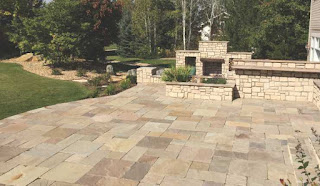NATURAL STONE
NATURAL STONE
What is natural stone?
The term natural stone refers to a variety of mountain-born mineral substances that stand in contrast to any synthetic or manufactured stone products. Common natural stone flooring includes slate, marble, limestone, travertine, granite, and sandstone, each of which has slightly different properties
Natural stone is a variety of sandstone. It formed as rivers flowed off a former mountain range along the eastern seaboard. As many thousands-year-old rivers wound their way through the landscape, they left behind pockets of sandstone in India Because the sandy deposits occurred in small, scattered areas, the quarries were small, too, setting the stage for generations of family-run quarrying operations throughout the region.
This trio of rocks shows what happens if you crank up the thermostat on a stone. The predecessor to all of these stones is shale, which is compressed clay and is decidedly un-sexy. But add a little heat and pressure and those unremarkable clay particles start to grow and strengthen and the rock turns into slate. Unlike shale, slate is durable – and is workable into tiles, shingles, and of course, old-school blackboards.
If the stone gets hotter, the clay particles morph into mica and the rock takes on a subtle sheen. This is called phyllite, but in commercial terms, phyllite is usually sold as slate. More heat begets even larger mica grains, and the stone becomes schist, which is known for its glittery look. Schists with small mica grains are preferable to stones with large chunks of mica because the latter can be weak and literally flaky.
Adding even more heat and pressure will make the stone separate into bands of light and dark minerals. Striped or banded patterns are the hallmark of gneiss. The patterns can be calm or bold, straight or swirled. For commercial purposes, gneiss is usually classified as granite, because it’s made of the same minerals, and shares similar properties and colors.
If the stone gets hotter still, it will start to melt. In some slabs of gneiss, you can see melted blobs of quartz, showing the stone was right on the edge of becoming liquid again. If the whole thing melts, then you’ll end up with granite, an igneous rock.
Granite means many things. It’s a catch-all category that’s often used to describe any hard, crystalline stone. In geology, granite is one specific thing: an igneous rock that is coarse-grained and overall light-colored. But in the parlance of the natural stone industry, the definition of granite is expanded to include all igneous rocks, as well as many metamorphic rocks like gneiss and schist.
Geologists classify igneous rocks by the size of the crystals and the types of minerals. And while you will definitely sound smart if you casually inquire if your local slab yard has any quartz monzonite or granodiorite, that’s not necessary. Most igneous rocks are quite similar to each other, despite their different colors and patterns. We can just stick to calling them all granite.
Onyx and travertine are variations of the same stone. They come about from mineral-laden water like you’d find at the mouth of a hot spring. Both are made of calcite, the same mineral that’s in limestone and marble. Travertine has a lacy pattern from the way the water flows in little rivulets away from the mouth of a hot spring. Onyx can form from either hot or cool water and is less porous than travertine. Onyx is beloved for its smooth layers and gem-like colors that are especially glorious when backlit.
Geologists and natural stone aficionados agree
Natural stone offers a lot to love—there’s zero doubt about that. Take a moment to learn about the history and characteristics of your favorite stone, and I bet you’ll appreciate it even more.
What can I use to clean natural stone?
Steps
Sweep off surface debris. If you are cleaning a natural stone floor, you'll want to use a fluffy mop or brush that has soft, natural bristles.
Mix warm water and mild dish detergent in a bucket.
Wipe down the natural stone with the solution.
Rinse off the solution with distilled water.
Dry the stone.
Which is the hardest Flooring Natural stone?
Although the hardest natural stone on the earth is the Granite and Marble, which is rated five on the Mohs scale, Marble & granite are known as the most durable and hardest natural stone that is used in construction material and is measured six on Mohs scale.
The best Marble is Statuario marble a d Makrana white marble supplier in India is BHANDARI MARBLE GROUP at Kishangarh in Rajasthan, India. Price, quality, cutting, the thickness of marble is most genuine. Range and variety are topmost. Granite- lasts many centuries.
Which type of marble is best for flooring?
White Marbles
White marble slabs are one of the best options for flooring material due to its beautiful and pure look.
White marble is the most likely choice for homes as the white color adds elegance and create serenity in the atmosphere.
How strong is marble?
As a result, marble is less porous and slightly stronger than limestone, but still less durable than granite. Depending on the limestone and the mineral combination within the marble, most marble rates from three to five on the Mohs hardness scale.
BHANDARI MARBLE GROUP,
INDIA,
RAJASTHAN,
KISHANGARH-305801
CONTACT US
+91 9672941111


Comments
Post a Comment